Rec Sports
New Ice rink for Indonesia
Right next to Indonesia’s capital Jakarta, in the City of Tangerang, it has been decided to build the first “stand alone ice rink” in the country, marking a historic step in the development of winter sports infrastructure and Ice Hockey in Indonesia. Indonesia’s Minister for Youth and Sport, Mr. Ario Bimo Nandito Ariotedjo, the Regent […]

Right next to Indonesia’s capital Jakarta, in the City of Tangerang, it has been decided to build the first “stand alone ice rink” in the country, marking a historic step in the development of winter sports infrastructure and Ice Hockey in Indonesia.
Indonesia’s Minister for Youth and Sport, Mr. Ario Bimo Nandito Ariotedjo, the Regent of Tangerang, Mr. Mohamad Maesyal Rasyid as well as IIHF President Luc Tardif, highlighted the recent and very positive development the Ice Hockey Federation of Indonesia has been leading, in front of the ice hockey community which caught also the interest and attention of many Media representatives.
“Indonesia is a very pro-active IIHF member and is currently restructuring their programs with a focus on Youth Hockey and strategic concepts. The Sports Ministry and the National Olympic Committee are supporting the federation who is working tirelessly to reach new heights. This new ice rink is the result of all the hard work produced over the last couple of years and especially the positive cooperation amongst all stakeholders”, shared IIHF President Luc Tardif.
A so called “stand alone ice rink” in tropical countries is a rarely seen infrastructure as many of the ice rinks are also located in shopping malls. And such an ice rink can inspire positive development ideas to other IIHF member national associations.
“It can be the required game changer for Ice Hockey in Indonesia. It is also good to see that the programs and development opportunities the IIHF provides with the MNA Developer program on global as well as new initiatives on regional level – such as Youth Hockey Director Program or General Secretary Program – to name just a few, find also the way to strategic plans and concepts from our members”, noted IIHF Sport Development Manager for Asia, Harald Springfeld.
The new ice rink will be part of a large sports complex which is expected to become a sports hub in the area, surrounded by other sport and recreational facilities, residential areas and somewhat 200+ schools in the greater area. This initiative aligns with the city’s broader vision to promote sport tourism and diversify the athletic opportunities available to the community. The ice rink will not only support the growth of Ice Hockey and ice sports in Indonesia but it will also serve as a unique destination for families and visitors alike.
During the IIHF President’s visit, strategic meetings with the Sport Minister as well as National Olympic Committee took place: “I am convinced that the Sports Ministry and National Olympic Committee will further support the Federation as there is a plan in place. The IIHF provides with its Development Department a go-to station for members and it is promising that during our meetings new ideas were born which can help Indonesia as well as the South East Asia region overall”, so IIHF President Luc Tardif.
Construction of the ice rink is expected to be completed by the end of 2025, with the official opening anticipated in early 2026. Until then the Federation will further strive to develop strategical projects and implement new upgrades were required, this will undoubtedly allow their programs to be ready once the ribbon at the ice rink opening ceremony will be cut.
Rec Sports
Everett Rowing Association’s Youth Qualify for Nationals in Florida
EVERETT, MAY 27: The Everett Rowing Association (ERA) announced its Youth Boys Team has secured two spots in the upcoming National Championship Regatta in Florida. They are the only team in the Pacific Northwest to have entered the Championship. With nearly 200 teams and over 700 entries expected, ERA will compete against the top youth […]

EVERETT, MAY 27: The Everett Rowing Association (ERA) announced its Youth Boys Team has secured two spots in the upcoming National Championship Regatta in Florida. They are the only team in the Pacific Northwest to have entered the Championship.
With nearly 200 teams and over 700 entries expected, ERA will compete against the top youth rowing programs in the country, ERA said in a press release.
The U.S. Rowing Youth National Championship Regatta will be held in Sarasota, Florida from Thursday, June 12 to Sunday, June 15. The event will gather hundreds of the nation’s best young athletes for a weekend of high-level racing, showcasing the strength, precision, and sportsmanship that rowing demands.
“The qualification of these two crews to the National Championships represents a milestone for our entire program. Their results at Regionals mean they will be racing in the two most competitive categories in the country,” Executive Director of ERA Jon Campaña said. “This is the most athletes we’ve sent to Nationals since 2017, and we’re proud to be the only team from the Pacific Northwest entered in these events. We are honored to represent our team, our community, and our region at this prestigious event.”
The Regional Championships drew 30 teams from across the Pacific Northwest. Eleven boys’ and girls’ crews placed in the top five in their respective events, with five crews earning podium finishes.
“The road to this moment has been paved with early mornings on the Snohomish River and months of focused, team-driven effort. ERA’s national-bound athletes exemplify the dedication, skill, and resilience that define the program and have helped cement its standing as one of the Pacific Northwest’s leading youth rowing organizations,” ERA said.
For more information about ERA and its youth programs, visit www.everettrowing.com.
About Everett Rowing Association: Founded in 1984, Everett Rowing Association’s mission is to provide premier instruction to youth and adults in the sport of rowing. With a focus on promoting the sport of rowing at all levels, ERA offers programs for all youth, adults, and competitive rowers in Snohomish County. Committed to excellence, teamwork, and community, ERA provides opportunities for individuals of all ages and abilities to experience the joy of rowing.
Based on a press release from the Everett Rowing Association.
Rec Sports
Mullins & Harrold are Paw Paw top grads
Myley Mullins was named Valedictorian of the Paw Paw High School Class of 2025. Andrew Harrold was chosen as the Salutatorian of the graduating class. Commencement ceremonies were held on Friday, May 23 at Paw Paw High School. Myley Mullins Myley Mullins Myley Mullins is the vice president of the senior class. Daughter of Tommy […]

Myley Mullins was named Valedictorian of the Paw Paw High School Class of 2025. Andrew Harrold was chosen as the Salutatorian of the graduating class.
Commencement ceremonies were held on Friday, May 23 at Paw Paw High School.
Myley Mullins

Myley Mullins is the vice president of the senior class. Daughter of Tommy and Heather Mullins of Paw Paw, she is the youngest in her senior class. Mullins is not only a proud member of the National Society of High School Scholars and vice president of her senior class, she also was a volunteer for Empower U as well as other local organizations and youth sports.
Mullins was on the volleyball team for four years, cheer for three years, track and field for four years and played basketball for one year. Mullins will be attending West Virginia University in the fall to major in Criminology and Minor in Psychology and Forensic Science, then further her education in law school.
Andrew Harrold

Andrew Harrold is the son of Robert and Dawn Harrold and the youngest of six siblings. During his 13 years at Paw Paw Schools, he has been involved in numerous activities including Cross Country, baseball, track, Student Council, Youth Leadership Academy, and National Honor Society. He held leadership positions such as class Treasurer, baseball captain, and co-president of Paw Paw Chapter of NHS. He has been an active volunteer with the local American Red Cross blood drives, including donating blood himself since the age of 16. Harrold is currently enrolled in the Phlebotomy Technician program at Blue Ridge Community and Technical College and plans to further his education in the Practical Nursing Program at Mineral County Technical Center.

Rec Sports
‘Field of dreams’ – The Pajaronian
Pajaro Valley United player Aiden Gonzalez, 9, goes for the goal during a match on May 24. His team went on to beat North Coast FC 6-4. (Todd Guild/The Pajaronian) When Watsonville Mayor Maria Orozco was a student at Freedom Elementary School, she remembers running around the playing field, pock-marked as it was by holes […]
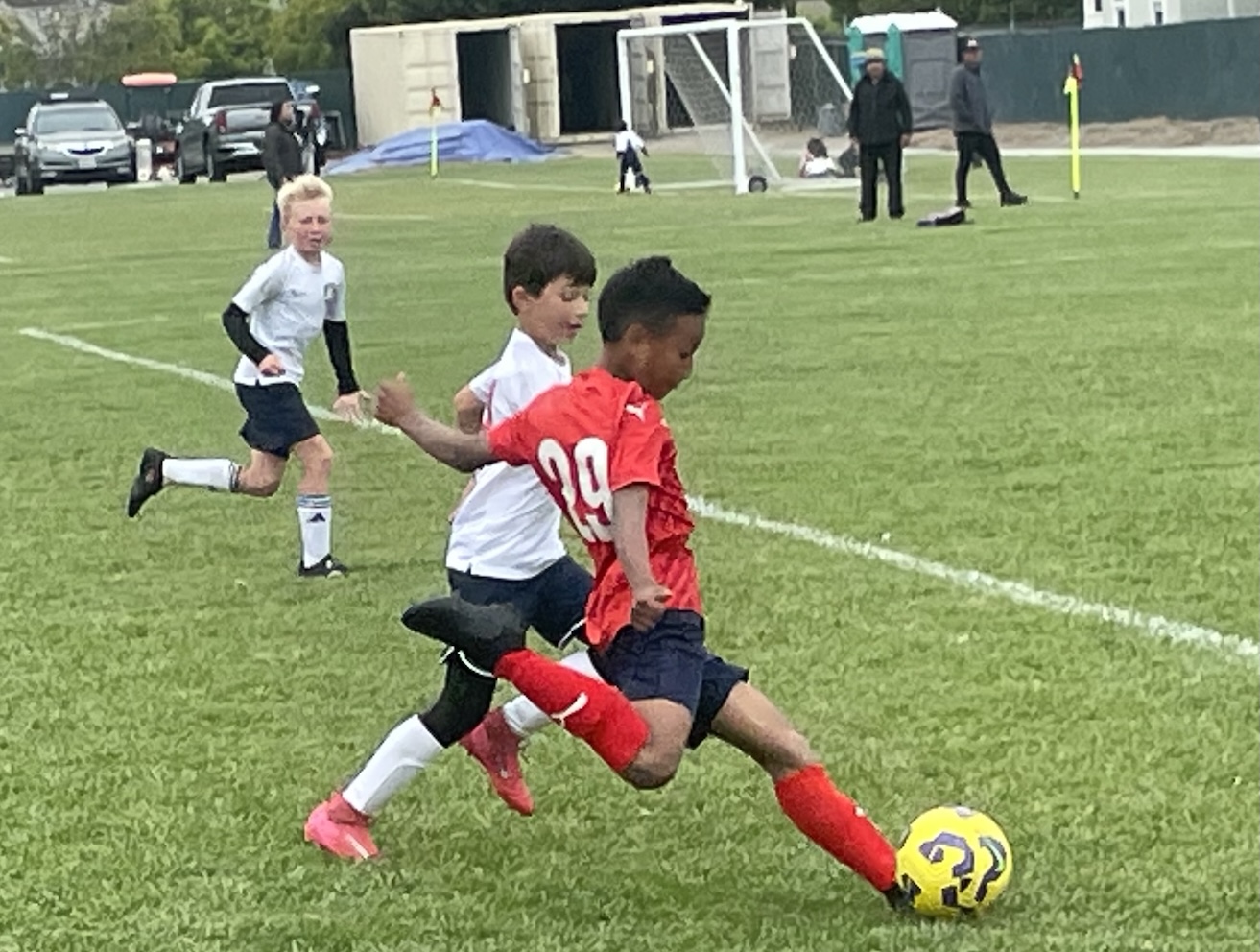


When Watsonville Mayor Maria Orozco was a student at Freedom Elementary School, she remembers running around the playing field, pock-marked as it was by holes and other signs of age and wear.
“I remember dreading it, because when we were done, my knees used to hurt,” she told a crowd gathered at the school on May 24 to dedicate the school’s newly restored soccer field.
Named for Ken Morena—a longtime Driscoll’s employee whose service to the community was lauded during the afternoon gathering—the new facility has three fields, and can accommodate games with both 11 and 9 players.
Gina Castañeda, who leads the Aztecas Youth Soccer Academy, said her players found it difficult during practices to use the former field.
“It was uneven, full of gopher holes and the grass was just weeds,” she said.
The Ken Morena Soccer Complex boasts new fencing, a parking lot, new irrigation and soil and new grass.
Under an agreement with Pajaro Valley Unified School District, the Pajaro Valley United soccer club will keep the field maintained, Castañeda said.
Driscoll’s CEO Miles Reiter, who worked with Morena for five decades, described his friend as gracious, caring, thoughtful and authentic.
“…and a lot of times those qualities don’t come all together,” Reiter said.
“He took particular satisfaction in giving young people an opportunity,” he said. “That’s why I think this field of dreams out here is particularly appropriate for someone who made such a big difference in the lives of so many young people.”
Morena joined Driscoll’s in 1977 as assistant to the President, and was promoted to president two years later. He semi-retired in 1999.
During his time with the company, he encouraged employees to contribute to their community. He spearheaded the company’s first adopt-a-school program with Pajaro Middle School, for which employees would tutor students, perform minor maintenance projects and give class presentations.
He also encouraged Driscoll’s to create internships for Cabrillo and Hartnell college students.
After the 1995 floods he led efforts to keep employees working, as well as clean up and rebuild farms.
In a brief speech, Morena said he was humbled by the honor.
“I’ve always loved sports, played them when I was young and I watch them now,” he said. “I’ve always felt that the more time young people spend on a field such as this, the less time they’ll have to get in trouble, and I think that holds true today.”
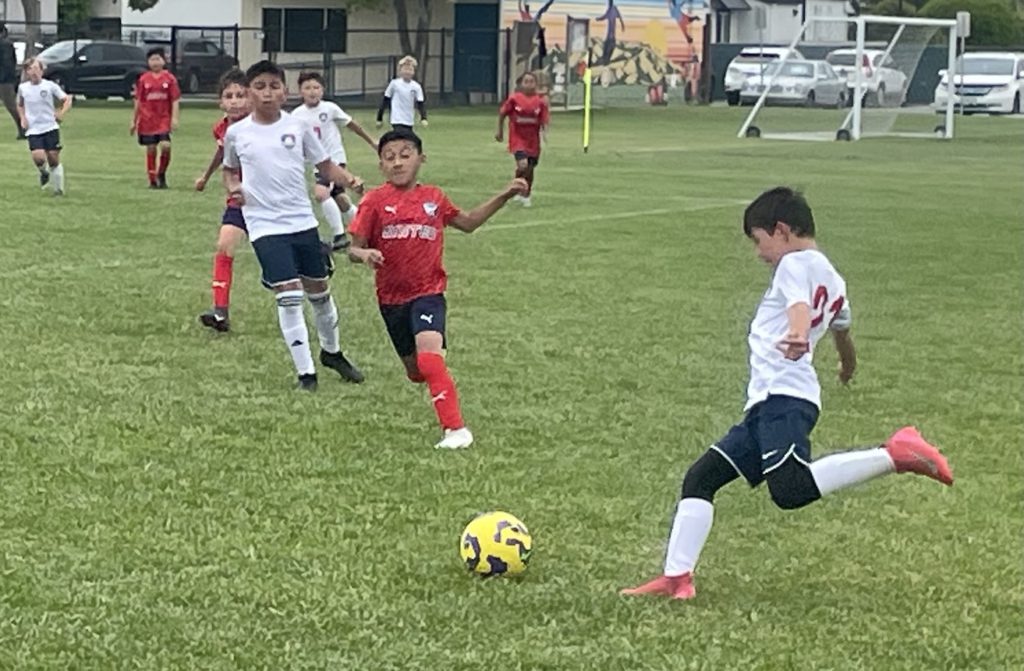

Castañeda, who is a county probation officer, founded the Aztecas Youth Soccer Academy in 2008 for juvenile probationers who affiliate with both Norteño and Sureño gangs. The goal of that program was to steer those teens away from gangs and incarceration by connecting them with positive role models while using the beautiful game as an entry point.
She has also run seven annual soccer camps, serving more than 175 youths per year from South Santa Cruz County to North Monterey County.
She said that sports gives young people a pro-social activity.
“Every child you see on the field out there has a support person, has a coach, has a system of support, someone they can come to when they need help,” she said. “It’s an investment in kids’lives, especially in this community where there are no county or city parks. There is not a lot of programming for kids, and this elementary and middle school is surrounded by gang activity.”
The $469,000 project was funded by Driscoll’s and the Community Foundation of Santa Cruz County, in addition to several private donors.
Rec Sports
South Central Youth Regional Championship Entry List – 3 Palms
ABERCROMBIE LANDRY LUMBERTON, MS 23. Micro 3 (7-8) Limited COB 36 3 Palms SC Youth Regional ABERCROMBIE LANDRY LUMBERTON, MS 24. 65cc (7-9) Limited KTM 36 3 Palms SC Youth Regional ACEVEDO MARQUIN IAN ANDREI 34. 125 Jr. (12-17) B/C YAM 38 3 Palms SC Youth Regional ACEVEDO MARQUIN IAN ANDREI 35. Schoolboy 1 (12-17) […]

Rec Sports
Southwest Amateur & Youth Regional Championship Entry List – Fox Raceway
ABBOTT NATHAN THOUSAND OAKS, CA 01. Open Pro Sport YAM 14 Fox Raceway SW Regional ABBOTT NATHAN THOUSAND OAKS, CA 02. 250 Pro Sport YAM 14 Fox Raceway SW Regional ABEYTA CANYON Monument, CO 06. 250 C YAM 407 Fox Raceway SW Regional ABEYTA CANYON Monument, CO 07. 250 C Limited YAM 407 Fox Raceway […]

Rec Sports
Denver’s New Soccer Stadium Set to Empower Community, Elevate Women’s Sports
The site of the new Denver’s women’s soccer stadium will be located along an active rail corridor historically used for industrial purposes. For generations, this corridor has acted as a barrier—separating a stable working-class neighborhood to the west from an older, established community to the east. With a major light rail/bus station adjacent to the […]
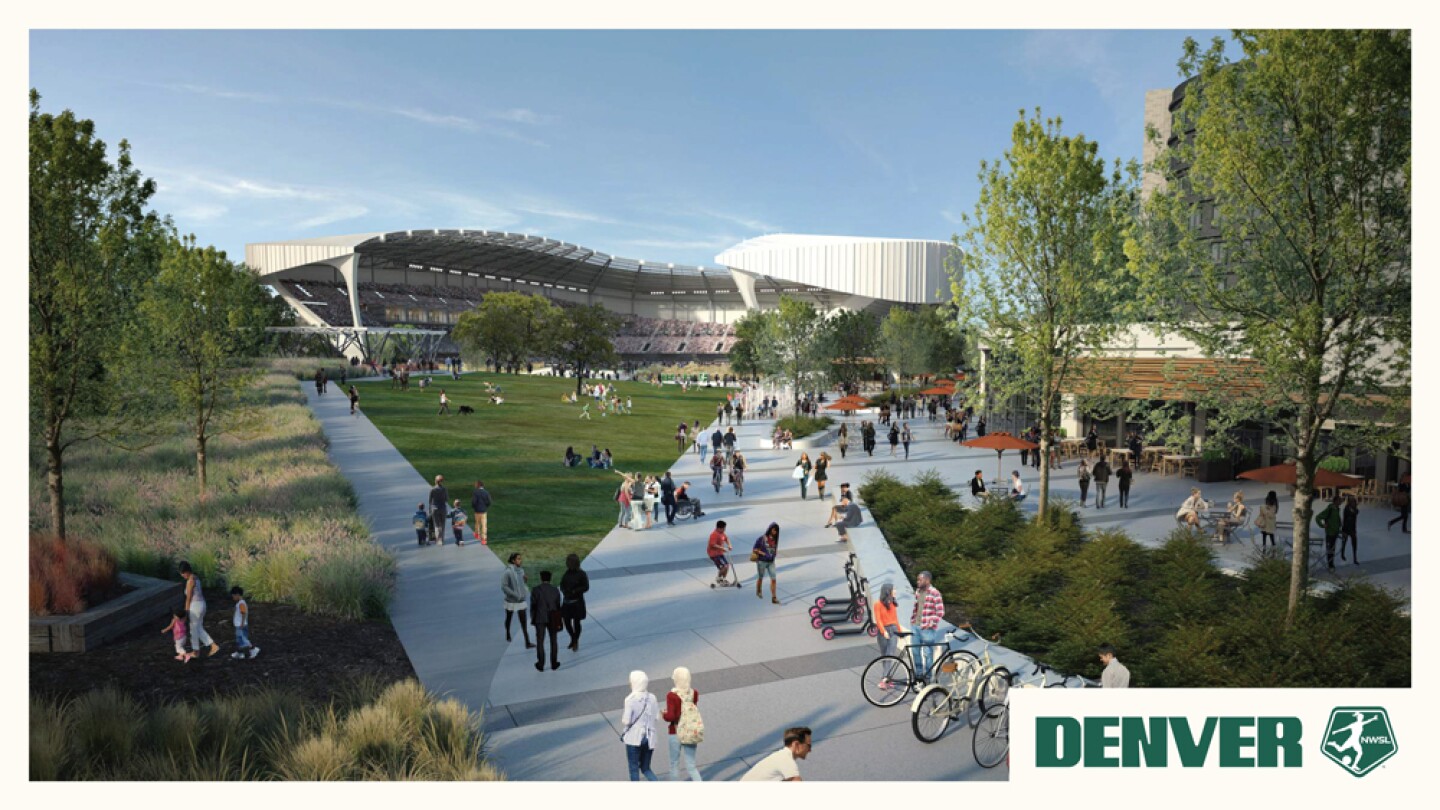

The site of the new Denver’s women’s soccer stadium will be located along an active rail corridor historically used for industrial purposes. For generations, this corridor has acted as a barrier—separating a stable working-class neighborhood to the west from an older, established community to the east. With a major light rail/bus station adjacent to the site, there’s an opportunity to transform the area into a vital connector—not just between these neighborhoods, but to the entire transit network and downtown.
In an exciting development for women’s sports in Denver, Colorado, the city council recently approved a $70 million infrastructure grant to purchase and ready a site for construction of a new stadium dedicated to a new National Women’s Soccer League (NWSL) team. This initiative marks a significant milestone not only for women’s soccer but also for the community at large, as it aims to empower women’s sports and create a vibrant hub for activities revolving around them. The majority owner is IMA Financial Group, led by CEO Robert Cohen, a local philanthropist and hometown hero, and including investors Mellody Hobson, Ariel Investments co-CEO, through her subsidiary Project Level, and Mikaela Shiffrin, a two-time Olympic gold medalist. This project promises to alter the landscape of local sports by establishing a standalone venue dedicated solely to women’s athletics.

Mark Johnson, cofounder and president, Civitas
Rachel Walters Photography
Civitas, a prominent landscape and urban design firm founded by Mark Johnson, is working with architects from Populous, a global design firm, on this groundbreaking project. Their teams are working diligently to transform a site near the Santa Fe train yards into a state-of-the-art stadium that meets the needs of the new NWSL team and integrates public spaces to enrich the surrounding community. This approach reflects a commitment to creating a lasting legacy for women’s sports in Denver.
The planned venue, designed to seat 14,500 fans, is expected to open in time for the its inaugural season in 2028. Unlike many women’s sports teams that often play in facilities designed for men and share resources, the establishment of a dedicated stadium signifies a profound shift in how women’s sports are perceived and supported. Johnson emphasizes the importance of community engagement and collaboration as they navigate the complex planning processes, aiming to ensure that the stadium and its surrounding areas foster a thriving environment for youth sports and community events.
After the city council’s historic vote, Urban Land sat down with Johnson and with Matthew Breest, principal and design director of Populous, during the ULI 2025 Spring Meeting in Denver.
Urban Land: So, how fast can you get this done?
Mark Johnson: The team already has a temporary setup in Centennial—a suburb about 10 miles south of Denver—with a training facility and a pop-up stadium built on school district fields. [The team has] partnered with Cherry Creek School District so the facility will also support high school tournaments, which is just a great story: a pro team and a school district teaming up for something bigger than both. That temporary venue will open for games next spring.
The permanent stadium is just a couple miles from downtown, at the old Santa Fe Yards. The city council voted last night to approve infrastructure funding to support that site.
Funnily enough, we actually did a district plan for that same area about 10 years ago. Not much came of it at the time—some environmental cleanup, a bit of infrastructure—but now, with the team purchasing the land, it’s a whole new ballgame. Literally.
The site also includes a four-acre [1.6 ha] triangle that’s technically a public park. And in Denver, you can’t touch park boundaries without a public vote. But now, that space is being reimagined as part of an outdoor entertainment area connected to the stadium.
We’re hitting the ground running now. It’s exciting—and a bit of a sprint.
UL: How will you meet such an accelerated timeline?
Johnson: You start by throwing a lot of talented people at it—and then someone’s got to steer the ship. For the stadium, that’s Matthew Breest from Populous. For the district, it’s my partner Chris Parezo at Civitas.
A critical path is to start talking to people, making sure that everybody understands what’s coming. That means public meetings, engaging with the community, and being transparent about what’s next and how it will impact the city. We’re hoping it’ll take about nine months to get the district and zoning plans approved. Then comes the infrastructure master plan, where we’ll be designing and entitling in tandem—basically building the runway as the plane comes in. We want to be ready to cut the ribbon when the team arrives.
UL: What are design challenges for an all-female sports stadium? Women’s sports doesn’t have as large an audience as men’s sports, so is the venue smaller?
Johnson: We’re planning for 14,500 seats, but the scale fits the vibe. Women’s soccer in Denver isn’t just a spectator sport; it’s community-driven. Denver—the Front Range—is a hotbed of youth sports. There are big soccer connections here—more than football on a per capita basis; many more kids [participate locally] in soccer than [in] football or basketball.
There are two homegrown pro women’s players from this area. Mikaela Shiffrin—who, by the way, is the most decorated ski racer ever—is now a part-owner of the team. Women’s sports are already a big deal here.
And the ownership group wants this stadium and district to feel like it’s for the community—not just another commercial venture. This is about access, pride, and place.
UL: How many professional sports teams does Denver have now?
Johnson: We now have six professional sports teams, which very few cities have. We’ve got the Denver Broncos, football; the Denver Nuggets, basketball; the Avalanche, hockey; the Colorado Rockies, baseball; the Colorado Rapids, men’s soccer—and now, this new women’s soccer team. That’s a pretty elite club. Not many cities can say the same.

On one side of the new stadium, there’s a stable upper-middle-class neighborhood, Wash Park West; On the other, a working-class neighborhood called Athmar Park. In between, there is an industrial corridor including old train lines and warehouses. The rail line connects the southern and western suburbs. The bus rapid transit comes all the way in from Boulder.
UL: Where does the new women’s team stand? Is it moving to Denver, or is it a brand-new team being created?
Johnson: It’s a brand-new team. Right now, they’re finalizing ownership and governance, which is a league requirement. There’s even a social media poll asking fans to weigh in on the team name—it’s generating a ton of buzz and excitement. And get this: Season ticket sales have already surpassed those of other NWSL teams, exceeding expectations.
UL: What’s next in your timeline?
Johnson: We’re heading back to city council in October with the full district and stadium plan. The 11–1 vote we got was contingent on presenting that next level of detail. So, we’re full speed ahead.
UL: Can you talk about the site?
Johnson: Honestly, no one expected the stadium to end up where it did. When I got the call on January 3, I turned to my partner and said, “This is going to be fun—women’s soccer! But I bet it’ll be somewhere out in the suburbs, right?” Nope. It’s right in the heart of the city—which is the best possible outcome for Denver. The economic momentum that comes with a stadium and the development around it will be a huge boost for the south side.
On one side, there’s a stable upper-middle-class neighborhood, Wash Park West; On the other, a working-class neighborhood called Athmar Park. In between, you’ve got the industrial corridor—old train lines, warehouses. But the infrastructure’s there. The rail line connects the southern and western suburbs. The BRT [Bus Rapid Transit] comes all the way in from Boulder. It’s super-accessible.
We did the master plan here 10 years ago. Cleanup happened, but nothing really took off. That’s what makes this moment so exciting. This project could be the key to stitching together neighborhoods that have been disconnected for decades—connecting communities, industries, and cultures with the power of sport.
— — —
UL: What is your overarching vision for the design of the new stadium, and how does it reflect the values and aspirations of women’s sports in Denver?

Matthew Breest, principal and design director of Populous,
Matthew Breest: Our vision is to create a stadium that transcends the boundaries of traditional sports architecture—one that is not only home to elite women’s soccer but also a vital, inclusive part of Denver’s public realm. The design reflects the values of women’s sports by prioritizing openness, accessibility, and connection to community. Rather than isolating the stadium from its surroundings, we’re embedding it into the everyday experience of the city. It’s a space where inspiration and excellence are on full display, not just on match days but every day—redefining what it means for women’s sports to be fully integrated into the civic and cultural life of Denver.
UL: How will collaboration among the various stakeholders influence the design process?
Breest: From the start, [NWSL] commissioner Jessica Berman challenged us to think differently. She made it clear this couldn’t be a stadium tucked away behind gates or surrounded by a sea of parking. It had to connect—physically and emotionally—with the neighborhood and introduce the broader community to the power and passion of the women’s game. That vision set the tone for a deeply collaborative process.
This project has brought together an extraordinary mix of voices—city leaders, developers, athletes, fans, neighbors, and design professionals—all unified by the belief that the stadium should be a true civic asset. The design reflects that input, from the walkable, park-connected layout to the inviting public spaces that welcome people year-round. Collaboration has been essential in making sure the stadium doesn’t just serve one audience or one function—it’s designed to be a shared space that reflects the values, hopes, and culture of Denver itself.
From the earliest stages, community voices have helped shape everything from pedestrian connectivity to how the stadium interacts with the adjacent park. That collaboration ensures the stadium isn’t just designed for the community, but with it.
UL: What innovative design elements are you incorporating
Breest: The stadium’s distinctive open-ended stadium configuration opens to the south, ensuring that the public realm blends seamlessly with the soccer field. Metaphorically, they tie together, creating a natural visual corridor that connects the playing field directly to the adjacent city park and frames breathtaking views of the Front Range of the Colorado Rockies. This intentional openness transforms the spectator experience, allowing fans to feel simultaneously immersed in both the excitement of professional competition and the natural beauty of Colorado’s landscape. The design encourages year-round activity, with the stadium’s surrounding promenades and green spaces flowing seamlessly into public recreation areas, where community members can gather, play, and connect, regardless of game-day schedules.
UL: What are some of the unique challenges you’ve encountered in designing a stadium specifically for women’s soccer, particularly in terms of audience size and community integration?
Breest: Designing a stadium specifically for women’s soccer meant confronting—and ultimately rejecting—the legacy of retrofitted or secondhand venues. Too often, women’s teams are asked to perform in spaces that were never designed with them in mind. We set out to flip that script. This project takes a purpose-built approach from the start: every square foot of the stadium is designed to elevate the women’s game, from athlete facilities to fan experience.
One challenge was redefining what scale means—not downsizing expectations, but right-sizing for impact, flexibility, and future growth. Another was ensuring [that] the stadium seamlessly integrates with the surrounding community, both physically and culturally. That meant rethinking everything from traffic flow and transportation to creating shared green spaces and pathways that invite daily use by residents. In the end, the challenge became the opportunity: to build something entirely new that reflects the rightful place of women’s sports at the center of civic life.
UL: Looking forward, how do you envision the stadium impacting the local community and women’s sports culture in Denver over the coming years? What legacy do you hope this project will leave?
Breest: We hope the stadium becomes a national model for what’s possible when a city unapologetically invests in women’s sports—not as a side story but as a central force for community and economic growth. Beyond creating a space for elite competition, this venue will showcase the tangible returns of investing in women athletes—from growing fan bases and increased tourism to revitalized neighborhoods and year-round public space activation.
This stadium isn’t just a home for a team; it’s a case study in why capital and business leaders should see women’s sports as a smart, future-facing investment. It challenges outdated narratives about profitability and replaces them with proof of concept—highlighting that when infrastructure matches the ambition of women athletes, the results benefit everyone.
The lasting legacy will be a stadium that proves women’s sports aren’t just deserving of equal facilities—they are worthy of visionary ones. It’s about setting a new standard for how we value, support, and celebrate women’s contributions on the field and in society.
By anchoring elite athletics within a walkable, nature-forward public realm, we’re reinforcing the message that women’s sports deserve visibility, investment, and celebration. The lasting legacy will be a new standard—not just for stadium design but [also] for how public spaces can bring people together and elevate community pride through sport.
-

 High School Sports3 weeks ago
High School Sports3 weeks agoWeb exclusive
-
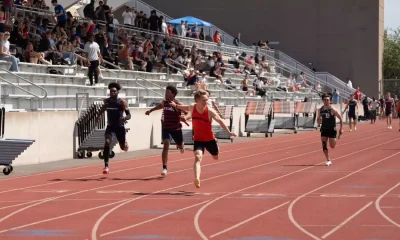
 Sports3 weeks ago
Sports3 weeks agoPrinceton University
-

 NIL3 weeks ago
NIL3 weeks agoPatty Gasso confirms Sophia Bordi will not finish season with Oklahoma softball
-
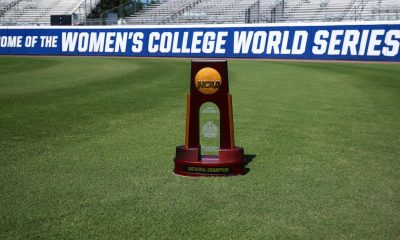
 Sports3 weeks ago
Sports3 weeks ago2025 NCAA softball bracket: Women’s College World Series scores, schedule
-

 Motorsports3 weeks ago
Motorsports3 weeks agoBowman Gray is the site of NASCAR’S “Advance Auto Parts Night at the Races” this Saturday
-
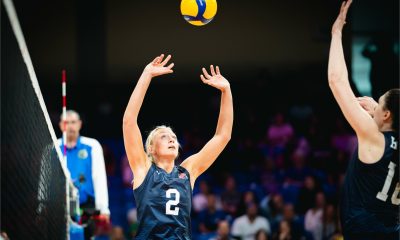
 Sports3 weeks ago
Sports3 weeks agoUSA Volleyball Announces 2025 Women’s VNL Roster
-

 Rec Sports3 weeks ago
Rec Sports3 weeks agoMontgomery County Honors First “Unsung Sports Heroes”
-
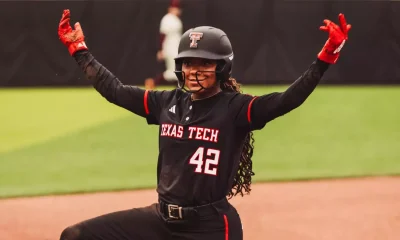
 NIL3 weeks ago
NIL3 weeks agoTexas Tech Red Raiders – Official Athletics Website
-
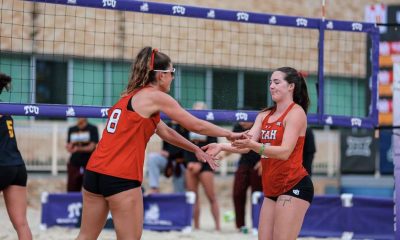
 Sports3 weeks ago
Sports3 weeks agoA fight to save beach volleyball and Utah athletics’ ‘disheartening’ answer
-
Motorsports3 weeks ago
This Week In NASCAR – Patriot Publishing LLC




























